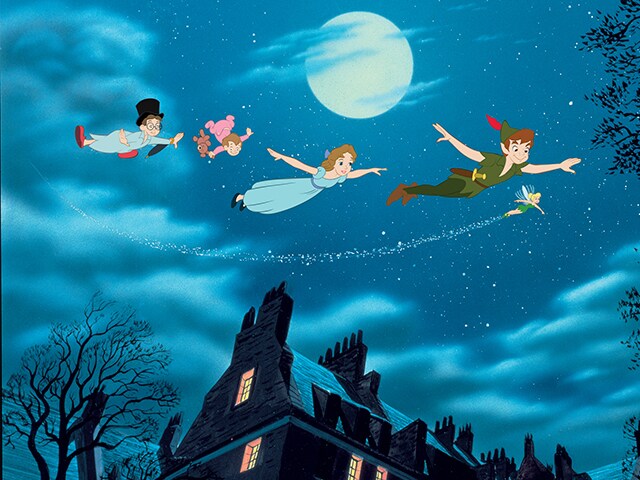Why Peter Pan Needed a Dusting
Peter Pan is an iconic children’s character — the boy who never grew up. You’re probably familiar with him. He lives on the mythical island of Neverland, fights pirates, hangs out with Tinkerbell and other fairies, and, most importantly for our purposes today, can fly. He can even teach you to fly, too — there’s even a song about it. All you need to do is think of merry little thoughts, be sprinkled with a touch of fairy dust, and off you go into the wild blue yonder.

Oh, wait, you’re all out of fairy dust? No flying for you, sorry to say. But that’s actually the point.
Peter Pan is the creation of author and playwright J.M. Barrie. Barrie first introduced the world to Peter in 1902 in a novel intended for adults titled “The Little White Bird.” In that book, we see Peter as a newborn, but he’s unlike most other young children; he can fly — but it’s biology, not magic. The book describes Peter as sitting somewhere between a bird and a human. And like other bird-like creatures, Peter can take to the skies.
In 1904, Barrie expanded on his Peter Pan character, writing a play called “Peter Pan, or The Boy Who Wouldn’t Grow Up.” The play — which tells the story you’re probably familiar with — proved extraordinarily popular. Barrie wrote a novelization of the play, titled simply “Peter Pan,” in 1911. Both stories are roughly the same — Peter Pan comes to the house of Wendy Darling and her brothers, teaches them to fly, sprinkles them with fairy dust, brings them to Neverland, etc. etc. But if you saw the original play during its first run, part of that story wouldn’t have been there. There was no fairy dust.
As Barrie first wrote it up, Peter can fly because he is part bird — despite not having wings. Flight, in Barrie’s fictional world, wasn’t so much about having the right parts, but rather, having the right know-how. If you knew how to fly, you could, even if physics said otherwise. And that’s not all that ridiculous — there are many, many other fictional characters blessed with the power to fly despite not having wings or jet packs or the like. So Barrie probably didn’t think much of this when his play debuted in London in December of 1904.
But then, parents wrote to him. Their children loved Peter, Wendy, and the rest — and they wanted to be just like the children they had seen on stage, “flying” through the air (aided by wires or other practical effects, unbeknownst to the children) through the power of their positive thoughts. These real-life kids wanted to be just like their new heroes, and, well, you can guess what happened next: a lot of hurt kids.
Barrie took the feedback to heart. Writing a dedication for a later version of the play, he explained how he reacted: “After the first production I had to add something to the play at the request of parents (who thus showed that they thought me the responsible person) about no one being able to fly until the fairy dust had been blown on him; so many children having gone home and tried it from their beds and needed surgical attention.”
From that point on, if Peter or Tinker Bell didn’t douse you with a little bit of fairy dust, you weren’t going anywhere but down. And as there was no fairy dust to be found, kids stopped jumping off their beds, never to land in Neverland.
Bonus fact: In the stage production of Peter Pan, the audience is asked to “clap if you believe in fairies” — and, invariably, the audience claps, even though the vast majority of those in attendance do not actually believe in such things. There are, however, plenty of people who do believe and would pay for the opportunity to see a “real” fairy up close. Just ask Jose Maldonado, who in the summer of 2011, was an out-of-work bricklayer living in Guadalajara, Mexico. As The Mary Sue explains, Maldonado claimed to have seen and captured a fairy: “I was picking guavas and I saw a twinkling. I thought it was a firefly. I picked it up and felt that it was moving; when I looked at it I knew that it was a fairy godmother.“ He placed the creature (or, much more likely, a toy) in a jar of formaldehyde and then charged people to come see. According to AOL News, a lot of people showed up: “More than 3,000 visitors paid the equivalent of $1.60 for a glimpse of the pixie.”
From the Archives: Wendy: How popular was Peter Pan? So popular, it gave us a new name.
